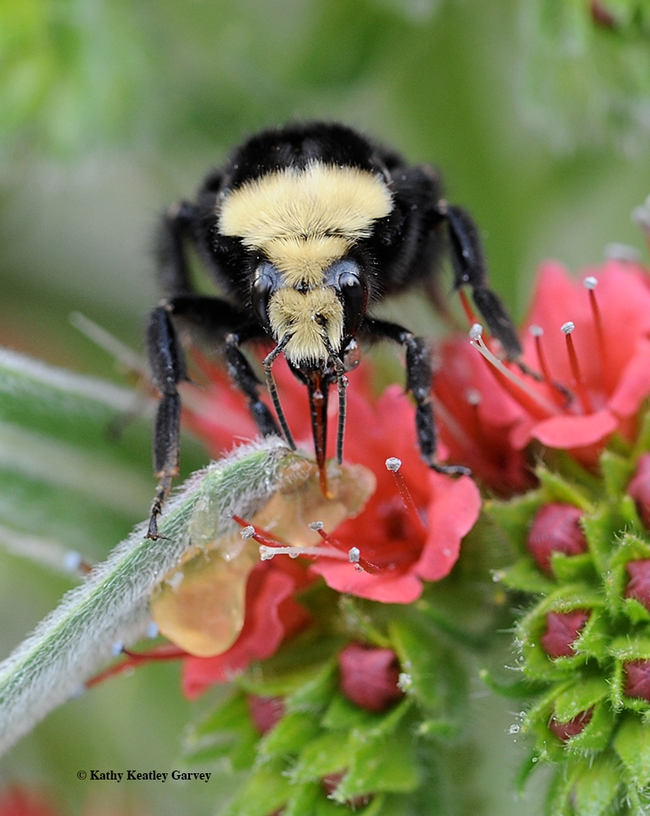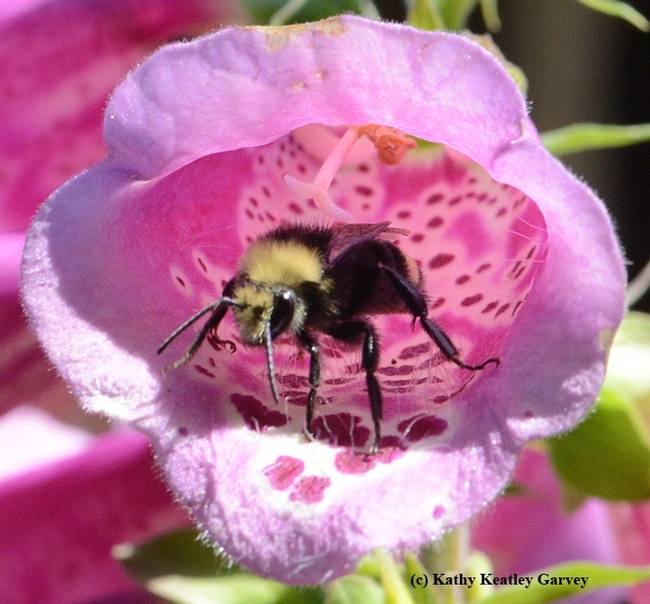When was the last time you sighted a bumble bee? Photographed it?
It's National Pollinator Week and one of our favorite bumble bees is the yellow-faced bumble bee, Bombus vosnesenskii. It was also a favorite of internationally renowned bee expert Robbin Thorp, distinguished emeritus professor of entomology at the University of California, Davis, who passed away June 7 at age 85. (See obituary)
In fact, all bumble bees were his favorite, including the elusive Franklin's bumble bee, found only in a small range in southern Oregon and northern California and now feared extinct. We remember a July 2010 interview with Thorp:
“People often ask the value of Franklin's bumble bee," Thorp told us. "In terms of a direct contribution to the grand scale of human economies, perhaps not much, but no one has measured its contribution in those terms. However, in the grand scheme of our planet and its environmental values, I would say it is priceless.”
“Loss of a species, especially a pollinator, diminishes our global environment,” he said. “Bumble bees provide an important ecological service--pollination. This service is critical to reproduction of a huge diversity of plants that in turn provide shelter, food (seeds, fruits) to diverse wildlife. The potential cascade of effects from the removal of even one localized pollinator may affect us directly and indirectly.”
Thorp treasured bumble bees and encouraged everyone else to do so, too.
The yellow-faced bumble bees are native to the west coast of North America, from Baja California to British Columbia. They're important pollinators, especially important for their buzz pollination of tomatoes, peppers and cranberries. Buzz pollination occurs when they grab a blossom and shake it, dislodging the pollen. Honey bees can't do that.
The Xerces Society for Invertebrate Conservation recently posted that one quarter (28 percent) of North American bumble bees are in some degree of extinction risk. "Bumble bees face many threats including habitat loss, disease, pesticide use, and climate change." (See more information on bumble bees on the Xerces' site.)
Meanwhile, "across the pond," London has established a seven-mile long bee corridor of wildflowers just for pollinators.
"The Intergovernmental Science-Policy Platform on Biodiversity and Ecosystem Services (IPBES) said wild mammals had declined by 82 per cent since 1980, space for natural ecosystems had halved, and one million species were now at risk of extinction as a result of human action," according to a May 7, 2019 article in The Independent newspaper. "Insect pollinators are vital for the maintenance of ecosystem health and for global food security. Insects are required to maintain the existence of 75 per cent of crop species, 35 per cent of global crop production and up to 88 per cent of flowering plant species," reporter Harry Cockburn wrote.
Want to learn more about the bumble bees around us? A good start is to read these two books, both co-authored by Thorp in his retirement: Bumble Bees of North America: An Identification Guide (Princeton University, 2014) and California Bees and Blooms: A Guide for Gardeners and Naturalists (Heyday, 2014).
And, if you would like to get involved in citizen science, Bumble Bee Watch seeks your sightings.
Attached Images:

